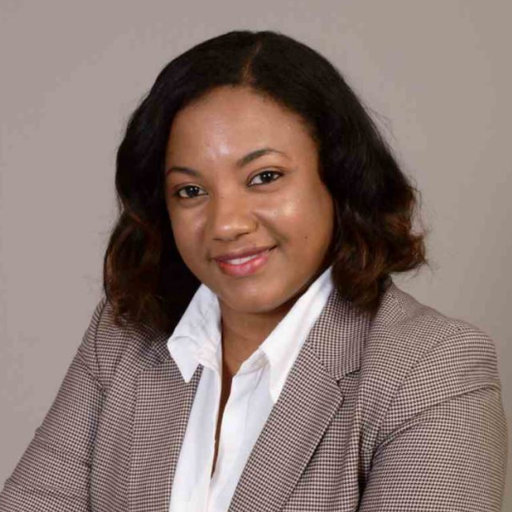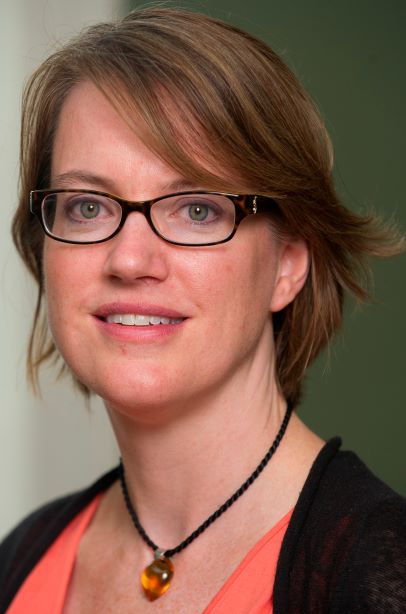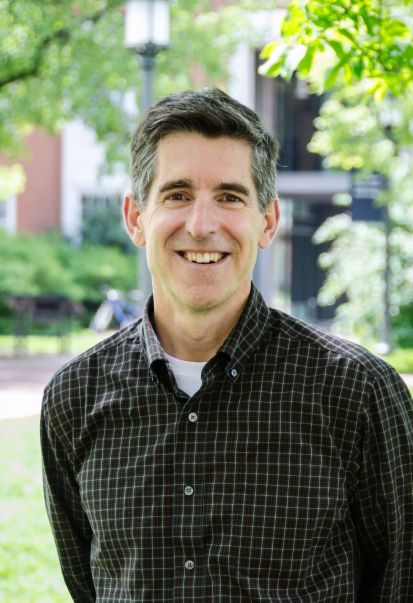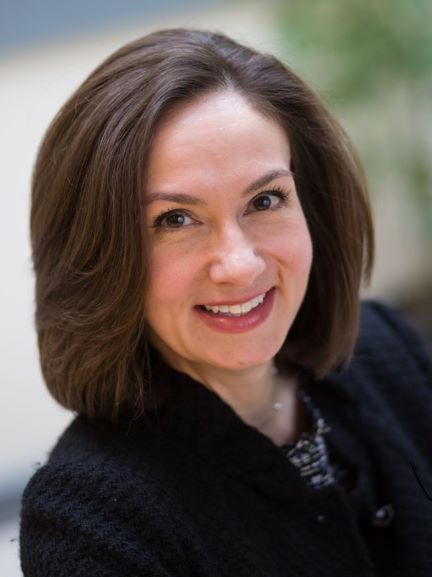Hopkins on the Hill: How Will Extreme Materials Save The World?

Brought to you by Hopkins at Home and Hopkins on the Hill
Brought to you by Hopkins at Home, Hopkins on the Hill, and the Johns Hopkins University Office of Research
![]() Follow us on Twitter to join the conversation: @HopkinsatHome, #HopkinsatHome
Follow us on Twitter to join the conversation: @HopkinsatHome, #HopkinsatHome
ABOUT THE PROGRAM
While the age of technology is exciting in its possibilities, we know that threats still exist: but science, and Johns Hopkins, are leading the way in protecting our armed forces and civilian populations from these threats. Join Tim Weihs (PhD, MS) and Lori Graham-Brady (PhD, MA) to see how Johns Hopkins is developing the next generation of warfighters, looking at the makeup of chemical weapons and nuclear blasts, and how we can better protect everyone.
ABOUT THE PRESENTERS
 Kerri-Lee Chintersingh, PhD, is a postdoctoral fellow in the Hopkins Extreme Materials Institute (HEMI) and Department of Materials Sciences and Engineering at Johns Hopkins University. She is an experienced chemical and materials engineering researcher and past process control engineer with a demonstrated research history which spans across the fields of combustion, powder technology, energetic materials, catalysts and metals. Dr. Chintersingh strives to merge and balance the preparation and characterization of novel materials and development of experimental diagnostic tools and computational models, with the goal to optimize and better understand complex reaction mechanisms in varying environments. Within the MSEE-URA, she is applying her research experience on the tuning of metal powders for ignition and combustion applications to ultimately intelligently design a new class of multiple-characteristic, time/temperature defeat energetics amenable to manufacturing scale-up.
Kerri-Lee Chintersingh, PhD, is a postdoctoral fellow in the Hopkins Extreme Materials Institute (HEMI) and Department of Materials Sciences and Engineering at Johns Hopkins University. She is an experienced chemical and materials engineering researcher and past process control engineer with a demonstrated research history which spans across the fields of combustion, powder technology, energetic materials, catalysts and metals. Dr. Chintersingh strives to merge and balance the preparation and characterization of novel materials and development of experimental diagnostic tools and computational models, with the goal to optimize and better understand complex reaction mechanisms in varying environments. Within the MSEE-URA, she is applying her research experience on the tuning of metal powders for ignition and combustion applications to ultimately intelligently design a new class of multiple-characteristic, time/temperature defeat energetics amenable to manufacturing scale-up.
 Lori Graham-Brady, PhD, is chair of the Department of Civil and Systems Engineering and associate director of the Hopkins Extreme Materials Institute (HEMI), one of Johns Hopkins University’s premier research institutes. She is also the Director of the Center for Materials in Extreme Dynamic Environments (MEDE). Dr. Graham-Brady is a leading global researcher in the field of computational stochastic mechanics, multiscale modeling of materials with random microstructure, and the mechanics of failure under high-rate loading. Graham-Brady’s research provides critical computational modeling needed to understand the connections between material-scale uncertainties and reliability of structures. Her work in direct government and industrial application includes development of a collaborative program funded by and in partnership with the Army Research Labs for implementing multiscale modeling and design of materials for extreme dynamic environments, in particular designing ceramics and composites for armor applications.
Lori Graham-Brady, PhD, is chair of the Department of Civil and Systems Engineering and associate director of the Hopkins Extreme Materials Institute (HEMI), one of Johns Hopkins University’s premier research institutes. She is also the Director of the Center for Materials in Extreme Dynamic Environments (MEDE). Dr. Graham-Brady is a leading global researcher in the field of computational stochastic mechanics, multiscale modeling of materials with random microstructure, and the mechanics of failure under high-rate loading. Graham-Brady’s research provides critical computational modeling needed to understand the connections between material-scale uncertainties and reliability of structures. Her work in direct government and industrial application includes development of a collaborative program funded by and in partnership with the Army Research Labs for implementing multiscale modeling and design of materials for extreme dynamic environments, in particular designing ceramics and composites for armor applications.
 Tim Weihs, PhD, is a professor of materials science and engineering and program manager of the Materials Science in Extreme Environments University Research Alliance (MSEE-URA). His research focuses on the fabrication, characterization and application of reactive, structural and functional materials. He is driven by an interest in developing an understanding of how novel processing and chemistries can deliver unique microstructures and properties for scientific studies and specific applications. In structural and functional materials, Weihs has leveraged thermal and mechanical processing methods to refine the microstructure of FeCo alloys for jet engine applications and the microstructure and chemistry of Mg alloys for armor and biomedical applications. Weihs also is using 3-D weaving and additive manufacturing to create novel architected materials with enhanced permeability, stiffness and damping for structural and biomedical applications. Through collaborations, his novel agent defeat materials have been shipped and tested at six national labs (including DSTL), two companies, and multiple universities.
Tim Weihs, PhD, is a professor of materials science and engineering and program manager of the Materials Science in Extreme Environments University Research Alliance (MSEE-URA). His research focuses on the fabrication, characterization and application of reactive, structural and functional materials. He is driven by an interest in developing an understanding of how novel processing and chemistries can deliver unique microstructures and properties for scientific studies and specific applications. In structural and functional materials, Weihs has leveraged thermal and mechanical processing methods to refine the microstructure of FeCo alloys for jet engine applications and the microstructure and chemistry of Mg alloys for armor and biomedical applications. Weihs also is using 3-D weaving and additive manufacturing to create novel architected materials with enhanced permeability, stiffness and damping for structural and biomedical applications. Through collaborations, his novel agent defeat materials have been shipped and tested at six national labs (including DSTL), two companies, and multiple universities.
 Keri N. Althoff, PhD, is the Provost’s Fellow for Research Communication and an associate professor of epidemiology in the Bloomberg School of Public Health and the School of Medicine. As a Provost’s Fellow, she is expanding our institutional capacity to share research achievements. Dr. Althoff's research interest is aging in the context of human immunodeficiency virus (HIV) infection. She serves as the co-director of the North American AIDS Cohort Collaboration on Research and Design (NA-ACCORD), which is a collaboration of more than 20 longitudinal HIV cohort studies of adults with individual-level harmonized data. She earned her bachelor's degree at the University of Iowa, then her MPH and PhD from the Johns Hopkins Bloomberg School of Public Health. Prior to becoming an accomplished epidemiologist, Dr. Althoff worked in public relations and journalism. Her skills and passion for sharing research with broad audiences make her the perfect host for Hopkins on the Hill at Home 2021.
Keri N. Althoff, PhD, is the Provost’s Fellow for Research Communication and an associate professor of epidemiology in the Bloomberg School of Public Health and the School of Medicine. As a Provost’s Fellow, she is expanding our institutional capacity to share research achievements. Dr. Althoff's research interest is aging in the context of human immunodeficiency virus (HIV) infection. She serves as the co-director of the North American AIDS Cohort Collaboration on Research and Design (NA-ACCORD), which is a collaboration of more than 20 longitudinal HIV cohort studies of adults with individual-level harmonized data. She earned her bachelor's degree at the University of Iowa, then her MPH and PhD from the Johns Hopkins Bloomberg School of Public Health. Prior to becoming an accomplished epidemiologist, Dr. Althoff worked in public relations and journalism. Her skills and passion for sharing research with broad audiences make her the perfect host for Hopkins on the Hill at Home 2021.
The perspectives and opinions expressed by the speaker(s) during this program are those of the speaker(s) and not, necessarily, those of Johns Hopkins University and the scheduling of any speaker at an alumni event or program does not constitute the University’s endorsement of the speaker’s perspectives and opinions.
